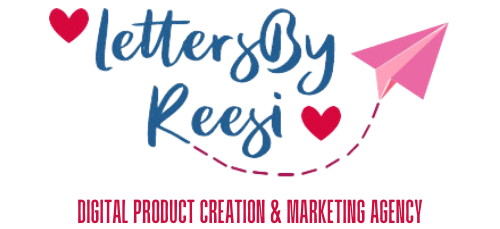“Pretty Please?” Let’s be honest, sometimes we wish that was enough to turn our audience into quality leads. I have helped women entrepreneurs with their copywriting for years and I can attest that a well-crafted Call To Action (CTA) can inspire immediate responses, guiding potential customers to take steps such as signing up, purchasing, or learning more about your product or service. But what makes a CTA truly effective? In this blog, I will share with you what has worked for me. We will explore essential strategies for mastering the call to action in copywriting, sharing actionable tips and examples to help you improve conversions across various platforms.
What is a Call to Action (CTA) and Why is it Important?

A call to action is a prompt that encourages readers to take a specific action. It’s a vital element in digital marketing, as it directs users on the next steps in their journey. Whether you’re designing a call to action button, writing CTA copy for a website, or incorporating CTAs into social media, understanding the psychology behind a strong call to action can improve engagement and ultimately increase sales.
Types of CTAs in Digital Marketing
Different types of CTAs serve unique purposes based on where they’re placed and what they aim to achieve. Some common types include:
- Purchase or Sign-Up CTAs: “Buy Now” or “Get Started Today”
- Lead Generation CTAs: “Subscribe for Updates” or “Download Your Free Guide”
- Engagement CTAs: “Share Your Opinion” or “Read More”
Each of these CTAs plays a role in engaging and converting users based on their position in the buyer’s journey. I help women entrepreneurs identify and create CTAs that will convert their audience and drive sales. Schedule a consultation and let’s start converting!
Crafting an Effective Call to Action

Creating a compelling call to action involves more than just adding a “Click Here” button. It requires understanding your audience, choosing the right words, and designing CTAs that stand out on the page.
1. Use Action-Oriented Language
A successful call to action relies on clear, action-oriented language that tells readers exactly what to do. For example, instead of saying, “We offer free consultations,” a stronger CTA would be, “Book Your Free Consultation Now.” By making the action immediate and specific, you reduce uncertainty and encourage users to take the next step.
Some powerful action words include:
- Start: “Start Your Free Trial Today”
- Get: “Get Instant Access”
- Discover: “Discover More”
When crafting your call to action copywriting, focus on language that encourages and motivates.
2. Create a Sense of Urgency
Adding urgency to your call to action can prompt quicker responses. By creating a sense of time sensitivity, you can increase the likelihood that users will act before they leave your site. Here are a few ways to incorporate urgency:
- Limited-Time Offers: “Claim Your Discount Before It’s Gone!”
- Exclusive Opportunities: “Get Exclusive Access Today”
- Deadlines: “Sign Up by Midnight for Free Shipping”
Urgency works well for calls to action buttons on landing pages and checkout processes, where timing can make all the difference.
3. Design an Eye-Catching Call to Action Button
The design of a call to action button is as important as the wording itself. A well-designed button can draw the eye and make the CTA stand out from the rest of the content. Here’s how to optimize your CTA button for maximum impact:
- Use Contrasting Colors: Make sure the CTA button stands out against the background.
- Make It Large Enough to Click: Especially for mobile users, a CTA button should be easy to tap.
- Use Clear Text: The CTA copy should be easy to read and understand at a glance.
The right design can make your call to action button examples both appealing and effective, drawing users’ attention and prompting them to engage.
Placement and Positioning of Your CTA

Where you place your call to action on the page can significantly impact its effectiveness. CTAs are often most effective at key decision points, such as:
- At the End of a Blog Post: After reading an article, users are primed to take action. A CTA like “Subscribe for More Tips” can capture this engagement.
- Above the Fold: Placing a CTA in the upper part of a webpage makes it instantly visible, reducing the need for users to scroll.
- Pop-Ups or Slide-Ins: When used sparingly, pop-ups and slide-ins can effectively grab attention without being overly intrusive.
Experimenting with placement can provide insights into what works best for your specific audience and website layout. Click here if you need help with this.
Testing and Optimizing Your CTA
To ensure your call to action performs well, it’s crucial to conduct A/B testing. Try out different call to action copywriting variations, button colors, or placements to see which combination yields the best results. Over time, A/B testing can reveal which CTAs are most effective in boosting conversions and driving user engagement.
Examples of High-Performing Call to Action Buttons
To inspire your own call to action design, here are some effective call to action button examples commonly used in digital marketing:
- E-commerce: “Add to Cart” or “Get 20% Off Now”
- Service-Based Businesses: “Book Your Free Consultation” or “See Pricing”
- Content Offers: “Download the Guide” or “Get Instant Access”
These CTA examples work well because they’re straightforward, action-oriented, and tailored to the reader’s intent.
FAQs About Call to Actions
- What makes a call to action effective?
An effective call to action is clear, specific, and action-oriented. It uses language that motivates readers and creates a sense of urgency, prompting them to take the desired action immediately. - How many CTAs should I use on a single webpage?
The number of CTAs depends on the webpage’s length and purpose. For blog posts, one or two CTAs placed at the beginning and end are sufficient. For landing pages, multiple strategically placed CTAs can increase conversion rates without overwhelming the reader. - What color works best for a CTA button?
The ideal color for a CTA button depends on your website’s design, but contrasting colors generally perform best. For example, a bright button on a neutral background is likely to draw more attention. - Can I use CTAs on social media?
Yes! Social media is a great platform for CTAs, especially when driving traffic to a landing page or generating leads. Phrases like “Swipe Up,” “Learn More,” or “Shop Now” work effectively on platforms like Instagram and Facebook.
Conclusion: Boost Conversions with an Effective Call to Action
Mastering the art of the call to action can significantly improve your website’s conversion rates and engagement. By using action-oriented language, creating urgency, and designing eye-catching call-to-action buttons, you can encourage visitors to take the next step on their journey with you.
Ready to enhance your CTAs? Access HERE expert guidance on crafting CTAs that convert and align perfectly with your business goals!







